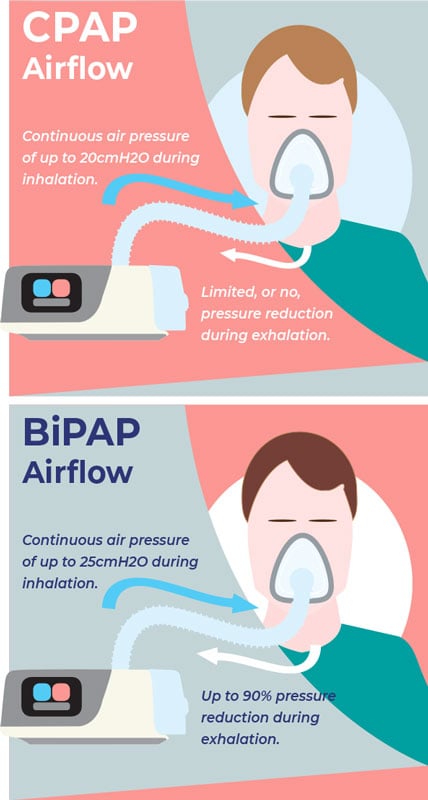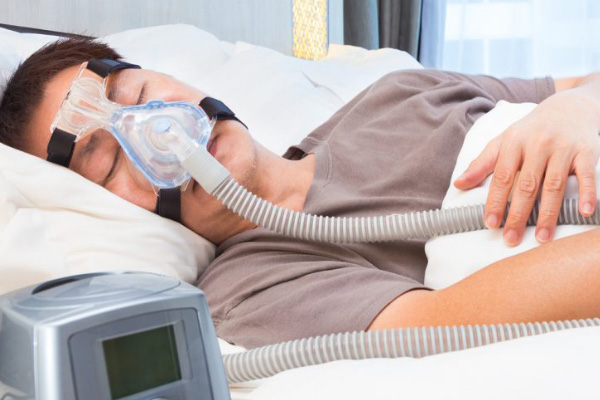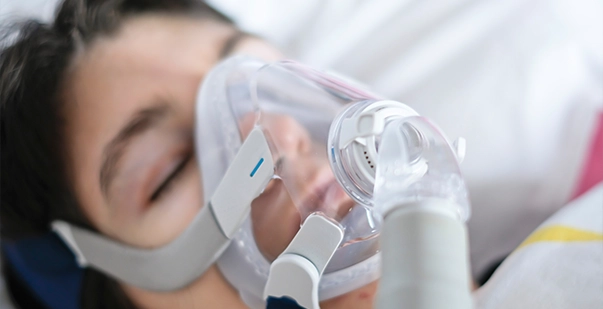Bipap vs. CPAP: Which Is the most effective for Your Rest Condition?
When browsing the complexities of rest conditions, the option in between BiPAP and CPAP therapy is a critical factor to consider. Each modality supplies unique advantages customized to specific conditions, yet the choice depends upon private patient requirements and convenience levels. While CPAP supplies a stable airflow suitable for obstructive sleep apnea, BiPAP's twin stress setups might improve convenience for those with more complex respiratory concerns. Recognizing these distinctions can dramatically affect treatment efficacy, leaving one to contemplate which option absolutely straightens with their health needs and way of living.
Understanding Rest Disorders
Rest problems encompass a series of problems that interrupt normal sleep patterns, affecting both the high quality and period of remainder. These conditions can materialize in numerous kinds, including insomnia, rest apnea, narcolepsy, agitated leg syndrome, and parasomnias. Each problem presents special challenges, usually resulting in considerable daytime fatigue, cognitive problems, and emotional disruptions.
Sleep problems is characterized by trouble falling or staying asleep, while sleep apnea includes duplicated disturbances in breathing throughout rest, usually bring about fragmented remainder. Narcolepsy, on the various other hand, is marked by excessive daytime drowsiness and sudden sleep attacks. Agitated leg disorder causes uneasy feelings in the legs, triggering an uncontrollable desire to relocate them, which can additionally prevent the ability to fall asleep.
The impact of rest conditions expands beyond individual wellness, affecting general performance, relationships, and high quality of life. Recognizing the details nature of each disorder is vital for effective medical diagnosis and therapy. As sleep health ends up being increasingly acknowledged as an important component of total health, attending to these disorders is vital for enhancing both rest top quality and day-to-day performance.
How CPAP Functions
Constant Positive Respiratory Tract Stress (CPAP) therapy is often employed as a main treatment for obstructive sleep apnea (OSA) The system of CPAP entails the use of a maker that provides a consistent stream of air through a mask used throughout sleep. This airflow preserves positive pressure in the air passage, avoiding the collapse or blockage of the throat that can occur during sleep.
When a patient inhales, the CPAP maker supplies a continual flow of air, making sure that the air passage stays open - BiPAP Rental. This not only relieves the signs and symptoms of OSA, such as snoring and interrupted sleep patterns, but also decreases the affiliated wellness dangers, including cardiovascular issues and daytime exhaustion
The pressure setups on a CPAP device can be tailored to meet specific person needs, frequently identified through a sleep research. On the whole, CPAP therapy has actually been shown to significantly boost the quality of sleep and overall wellness for people enduring from obstructive rest apnea.
Exactly How BiPAP Functions
BiPAP, or Bilevel Positive Airway Stress, is a specific form of non-invasive ventilation that is particularly beneficial for people with problems such as complex sleep apnea or respiratory system disorders. Unlike CPAP, which delivers a continuous stream of air at a solitary pressure, BiPAP offers 2 distinct stress settings: a higher inspiratory pressure for breathing and a lower expiratory stress for exhalation. This dual-pressure approach enables less complicated breathing, lowering the initiative called for throughout exhalation.
The gadget operates through a mask fitted over the nose or mouth, attached to a machine that creates air pressure. When the client inhales, the machine delivers the higher stress to aid with air flow, making certain that the airway continues to be open. Upon exhalation, the machine immediately decreases the stress, making it a lot more comfortable for the individual to breathe out.

Key Distinctions Between BiPAP and CPAP

In comparison, BiPAP (Bilevel Favorable Airway Pressure) supplies two various stress settings: one for inhalation and a lower one for exhalation. This double pressure system permits even more comfortable breathing, specifically for patients that battle with breathing out versus a continuous stress. BiPAP is typically recommended for patients with complex sleep apnea, persistent obstructive lung disease (COPD), or those who require extra assistance throughout sleep.
Additionally, the intricacy of BiPAP tools generally causes a greater cost and calls for more cautious titration than CPAP. BiPAP Rental. Understanding these vital differences can aid in acknowledging which tool might be preferable for particular sleep disorders, setting the foundation for informed therapy decisions
Selecting the Right Treatment
How can one figure out the most click resources suitable therapy for managing sleep problems? The decision between BiPAP and CPAP treatment primarily hinges on the details qualities of the sleep condition, the individual's total health and wellness, and their comfort with the device. CPAP, which provides a constant stream of air, is commonly suggested for obstructive sleep apnea (OSA) It preserves an open air passage during sleep, properly stopping hypopneas and apneas.
On the other hand, BiPAP provides two degrees of pressure: one for inhalation and a lower one for exhalation. This dual pressure system is valuable for clients with intricate sleep apnea or those that experience trouble breathing out versus a constant stress. Additionally, BiPAP is typically recommended for people with breathing conditions, such as persistent obstructive pulmonary illness (COPD), where varying pressure setups can improve comfort and conformity.
Inevitably, a comprehensive evaluation by a sleep professional, consisting of a sleep research, can assist identify which treatment lines up ideal with the patient's needs. Variables such as convenience, convenience of use, and specific medical problems need to also be thought about to enhance treatment end results.
Final Thought
In recap, both BiPAP and CPAP offer unique purposes in the management of rest conditions. CPAP works for obstructive sleep apnea via consistent air flow, while BiPAP supplies twin pressure setups that improve convenience for those with complex rest apnea or breathing problems. The choice in between these treatments ought to be directed by private needs and problems, requiring a thorough examination by a sleep expert to make certain ideal therapy results and enhanced top quality of rest.

In general, CPAP treatment has been shown to dramatically boost the quality of sleep and total wellness for people enduring from obstructive rest apnea.
BiPAP is typically advised for individuals with complex sleep apnea, chronic obstructive pulmonary condition (COPD), or those that call for additional support during sleep.
CPAP is reliable for obstructive rest apnea through regular airflow, while BiPAP offers dual stress setups that improve comfort for those with complicated rest apnea or respiratory issues.